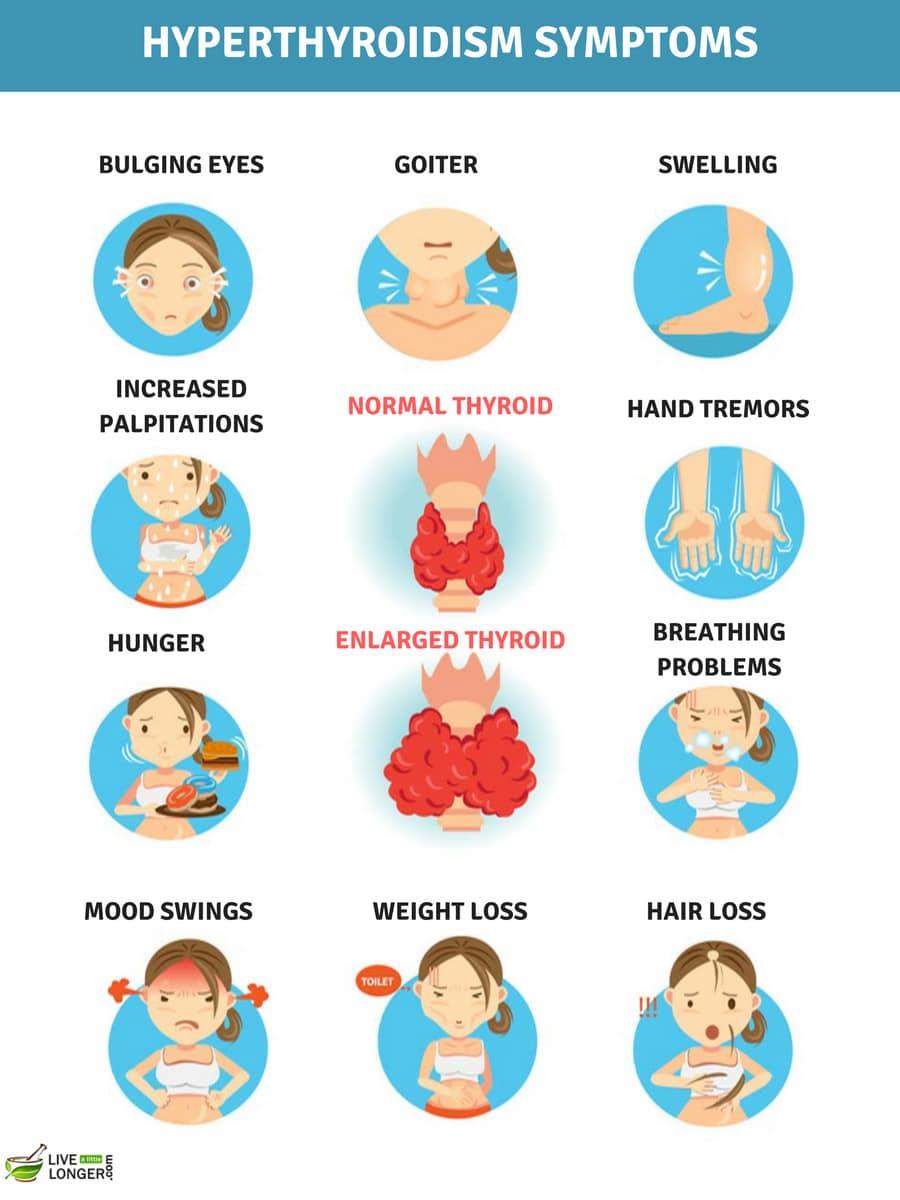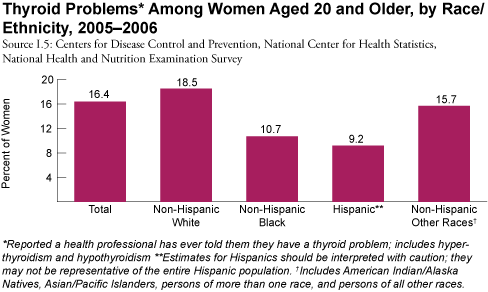Introduction
Hyperthyroidism is a health condition, which is characterized by hyperactivity of the thyroid gland with the release of an excessive amount of hormones. The thyroid is a small gland in the shape of a butterfly, located at the front of the neck; it produces T4 and T3 hormones that control how the human organism uses energy (Lights, Solan, & Fantauzzo, 2016). Also, the gland regulates the processes associated with metabolism with the help of releasing the mentioned hormones. Hyperthyroidism is diagnosed when the thyroid produces too much T4 and T3 (or both) (Lights et al., 2016). Proper diagnosis of the excessive hormone production and the management of underlying causes can relieve the symptoms of the condition and prevent complications from occurring. The topic of hyperthyroidism was chosen because the disease is relatively understudied, especially about its causes.
Causes
When it comes to the causes of hyperthyroidism, an extensive list of conditions can contribute to its development. The most common reason is Graves’ disease (an autoimmune disorder), which causes the antibodies present in the thyroid gland to produce too much hormone. As a rule, apart from environmental factors, the disorder tends to run in families, pointing to the genetic link. Family history, gender, age, other autoimmune disorders (type 1 diabetes, rheumatoid arthritis), physical and emotional stress, pregnancy, and smoking have also been identified as contributors to hyperthyroidism development.
Nevertheless, it remains to be discovered why particular people get the disease. Another type of hyperthyroidism is characterized by the presence of one or more nodes (or lumps) in the thyroid. These lumps may grow over time, becoming more active. This typically results in the greater output of the thyroid hormone in the blood (American Thyroid Association, 2017). This condition is referred to as toxic nodular or a multinodular goiter (American Thyroid Association, 2017). Additionally, people may experience hyperthyroidism symptoms when they have thyroiditis, a problem with the immune system, or an infection that causes the stored thyroid hormones to bleed. The same symptoms can appear when the patient is not properly treated and takes too much thyroid hormone in the form of tablets (American Thyroid Association, 2017).
Symptoms
Since the thyroid gland has a significant impact on the metabolism, if there is too much thyroid hormone produced, every function of the organism tends to flow faster. Therefore, it is not by chance that the condition is accompanied by the symptoms that indicate this acceleration of all body functions. The patient may suffer from anxiety, troubled sleeping or insomnia, irritability, nervous tension, muscle weakness, difficulty breathing, perspiration, hair brittleness, and skin thinning. Also, bowels tend to move faster, with diarrhea being very uncommon (American Thyroid Association, 2017). Individuals having hyperthyroidism are also likely to lose weight even without losing appetite. For women, this condition is fraught with interruptions of menstrual cycles, which can come less often. Even though the condition increases metabolism and contributes to boosts of energy, with time people tend to feel more tired.
In the majority of cases, hyperthyroidism develops gradually. Yet, the situation is different in adolescents, in whom the changes in the thyroid function can appear quite suddenly. It is not infrequent that the disease is not diagnosed immediately since it can be mistaken for excessive nervousness or overreaction to stress. Also, if a patient was trying to lose weight transferring to healthy nutrition, he/she may be very satisfied with results achieved in such a short period until the emergence of hyperthyroidism, which was the major cause of the loss of extra pounds. In the case of Graves’ disease (the most common form of hyperthyroidism), the person’s eyes may look excessively large due to the elevation in the upper lids accompanied by bulging (American Thyroid Association, 2017). The enlarge thyroid may also cause swelling in the front of the neck (American Thyroid Association, 2017).
Diagnosis
Appropriate diagnosis of hyperthyroidism is impossible without getting a complete disease history of the patient and a proper physical screening. According to Mayo Clinic Staff (2015), a physician is likely to try to detect tremors in fingers in case they are extended, assess whether the patient exhibits any signs of overactivity, eye changes, or has moist and warm skin. The thyroid gland will be examined upon swallowing to see whether it is enlarged, tender, or bumpy; the pulse will be checked to determine whether it exceeds the norm (Mayo Clinic Staff, 2015).
Hyperthyroidism is usually confirmed through blood tests that assess TSH and thyroxine levels in the blood. High thyroxine levels and nonexistent or low amounts of TSH indicate that the thyroid gland is too active (Mayo Clinic Staff, 2015). Blood tests are especially important for older adults, who may not exhibit typical signs and symptoms of hyperthyroidism. If the blood tests come out positive for hyperthyroidism, radioiodine uptake tests and thyroid are carried out. For the radioiodine test, patients are given a small dose of radioactive iodine that will collect in the thyroid since it needs iodine to produce hormones (Mayo Clinic Staff, 2015). After a set period (2, 6, or 24 hours), the patient is checked to see how much iodine the thyroid absorbed. For the thyroid scan, a radioactive isotope is injected into the vein to help produce an image of the gland with a special camera.
Treatment
Depending on the condition of the patient and the causes of hyperthyroidism, several medications can be prescribed. They include radioactive iodine, anti-thyroid drugs (propylthiouracil and methimazole), beta-blockers, and surgery. Lifestyle and home remedies include dietary supplements and changes in the intake of protein. It is also advised to get enough vitamin D and calcium to prevent the thinning of bones.
Prognosis
While hypothyroidism cannot be cured, it is treatable. In most instances, patients need life-long medication to manage their condition. Treatment for hyperthyroidism is usually successful because the dose of synthetic thyroxine stays active and available for the body to absorb for about a week, which contributes to the steady levels of T4 in the blood, supplying the cells with the hormone (Reid & Wheeler, 2012). Even in the most severe cases when thyroid needs to be removed, it is possible to live by taking thyroid medication. Moreover, people without a thyroid gland find it easier and faster to stabilize their hormone on a dose of medication and may have fewer dosage fluctuations compared to those with a gland (Holtorf Medical Group, 2015), which is considered a positive prognosis.
Conclusion
Hyperthyroidism is considered an understudied condition due to the lack of knowledge about its causes and methods to cure it. Nevertheless, it can be concluded that genetics plays a tremendous role in the development of the condition, which means that there is no real cure yet. However, patients diagnosed with hyperthyroidism can manage their symptoms with the appropriate dosages of hormonal medication that helps stabilize the function of the thyroid.
Illustrations


References
American Thyroid Association. (2017). Hyperthyroidism (overactive).
Holtorf Medical Group. (2015). No thyroid gland: What next? Web.
Hyperthyroidism symptoms [Image]. (2016).
Lights, V., Solan, M., & Fantauzzo, M. (2016). Hyperthyroidism.
Reid, J., & Wheeler, S. (2005). Hyperthyroidism: diagnosis and treatment. American Family Physician, 72(4), 623-630.
Thyroid problems among women [Image]. (2013). Web.